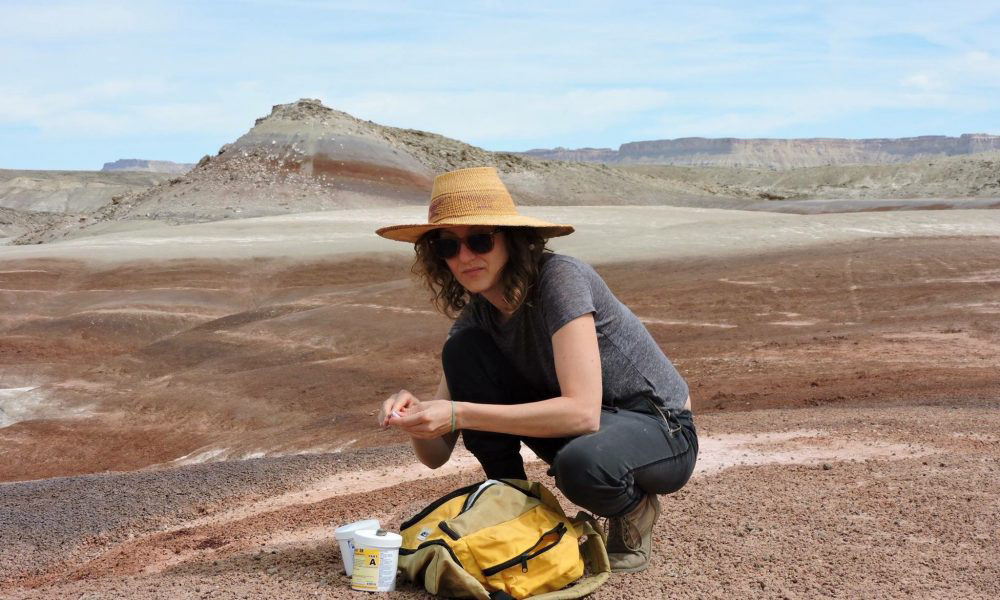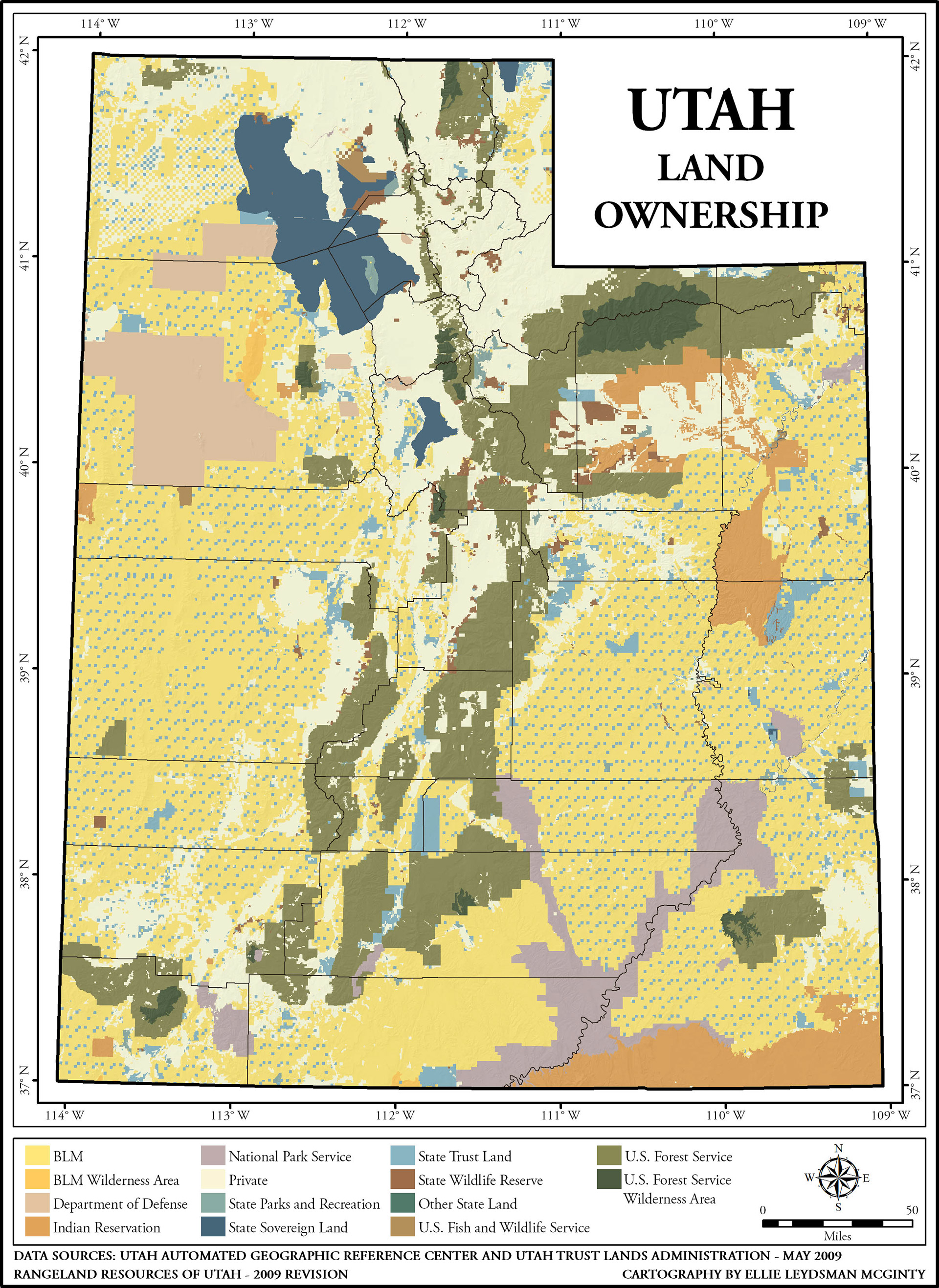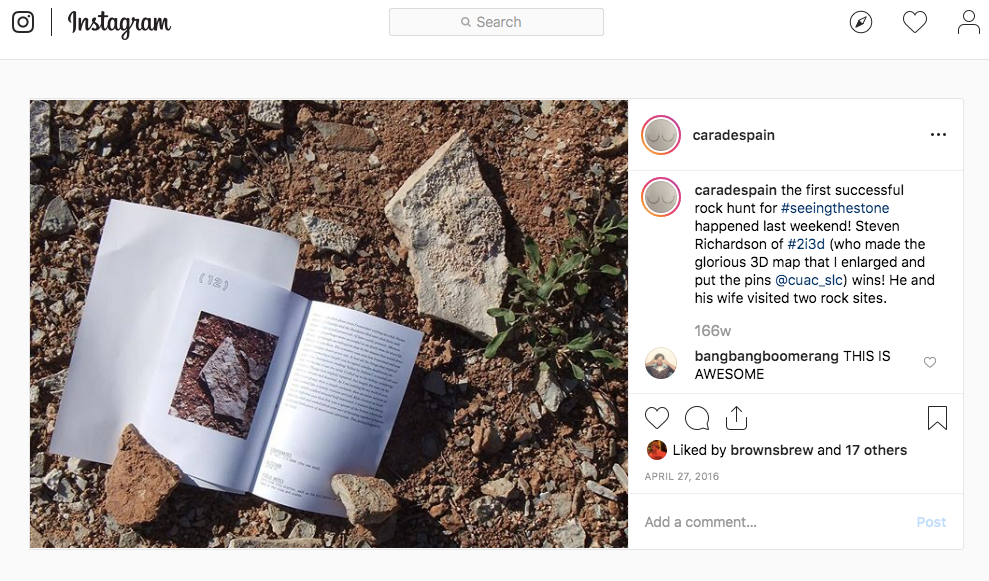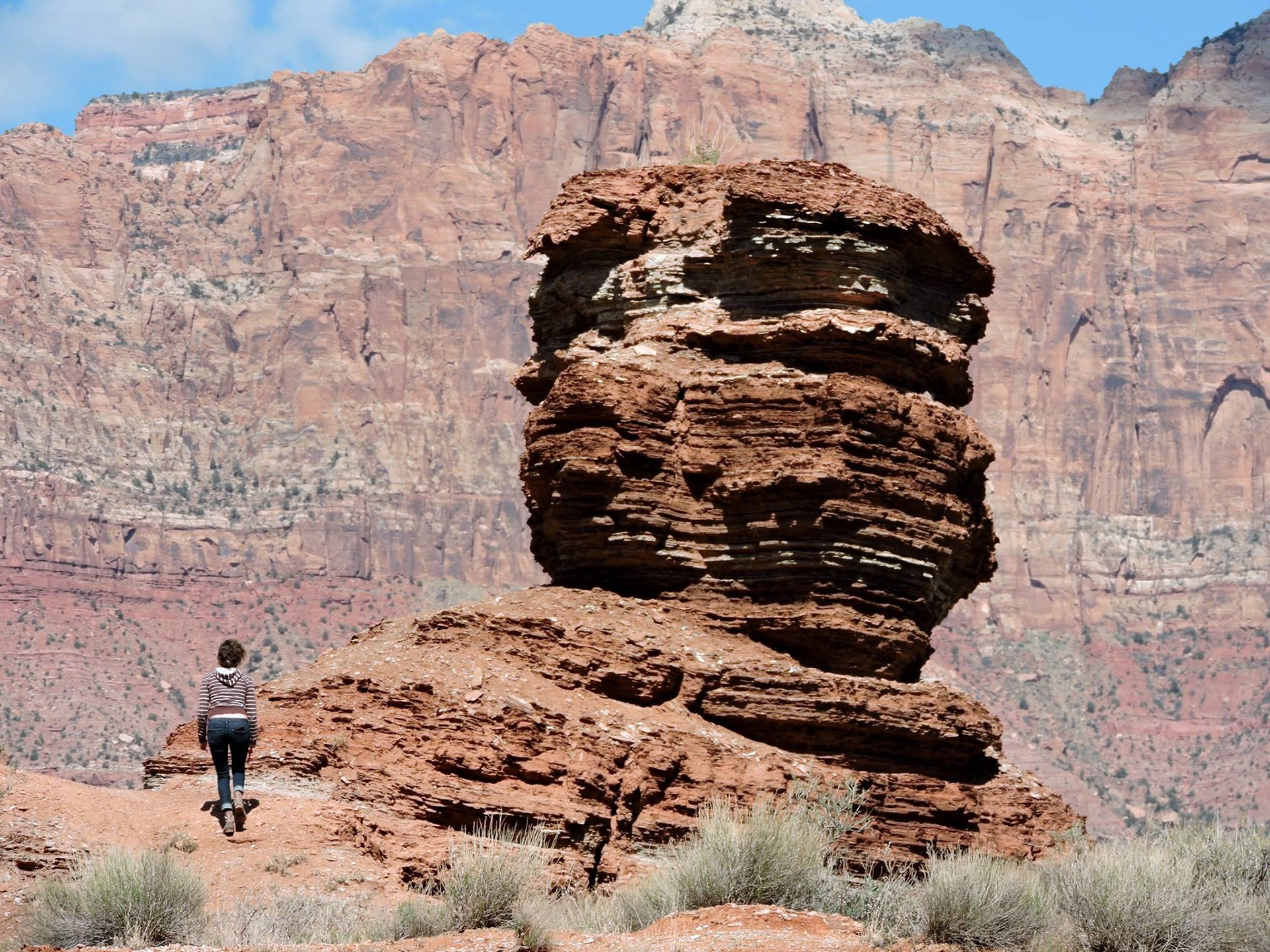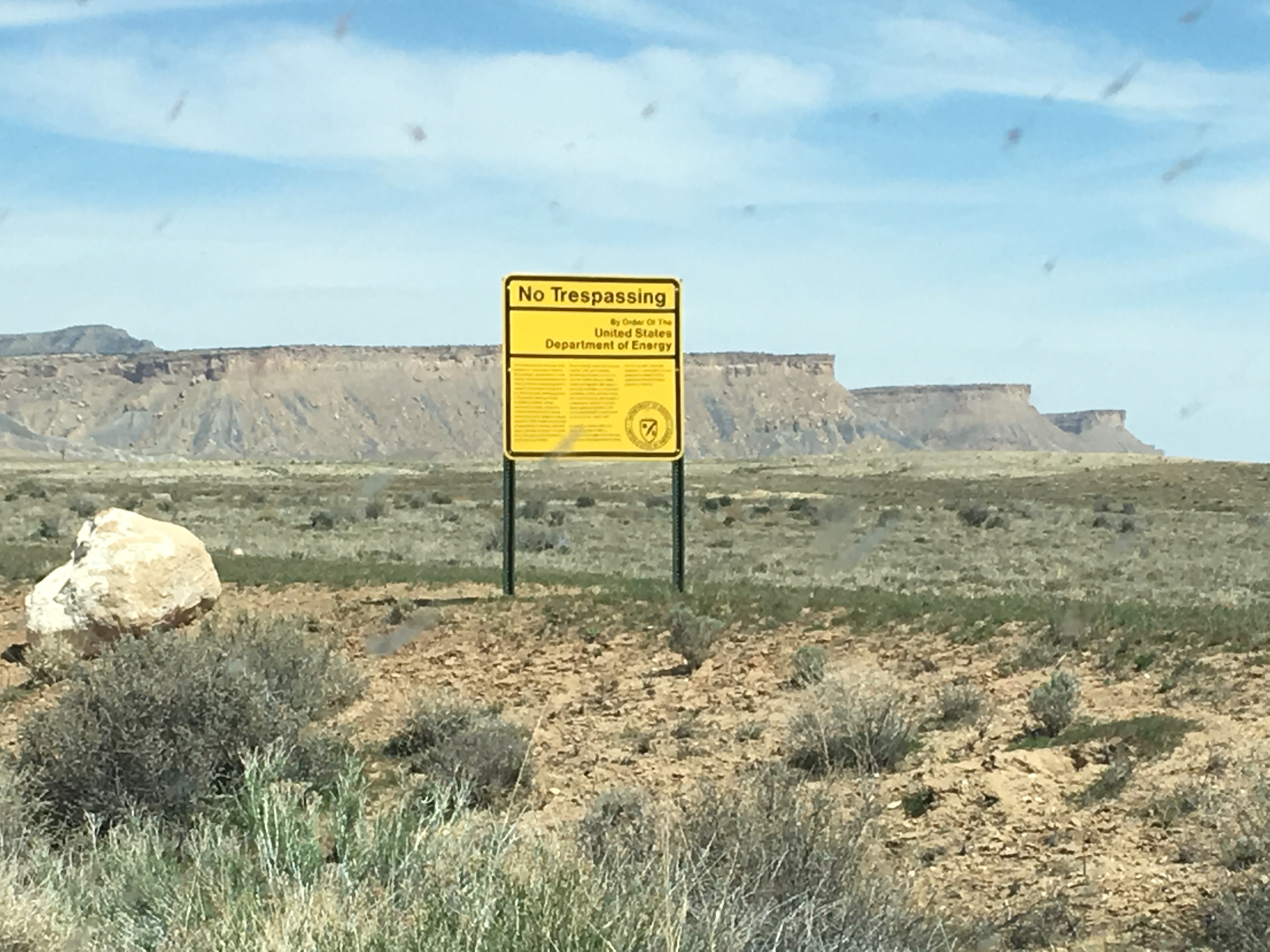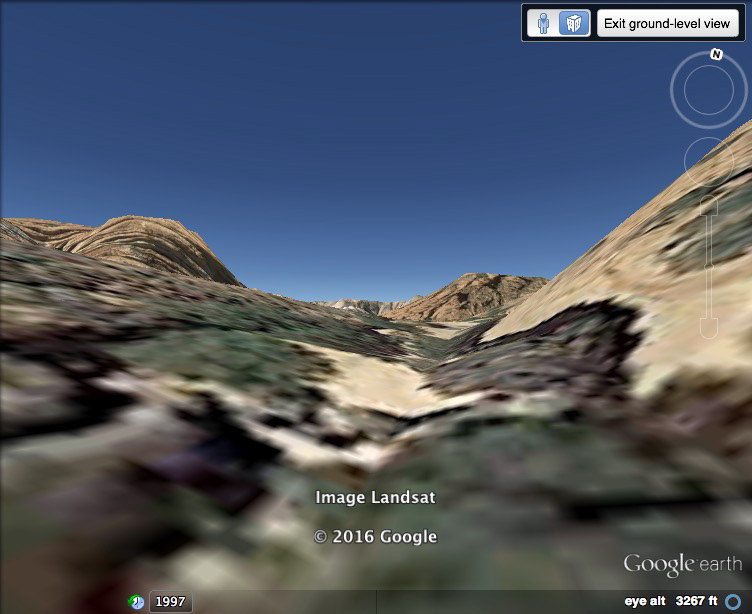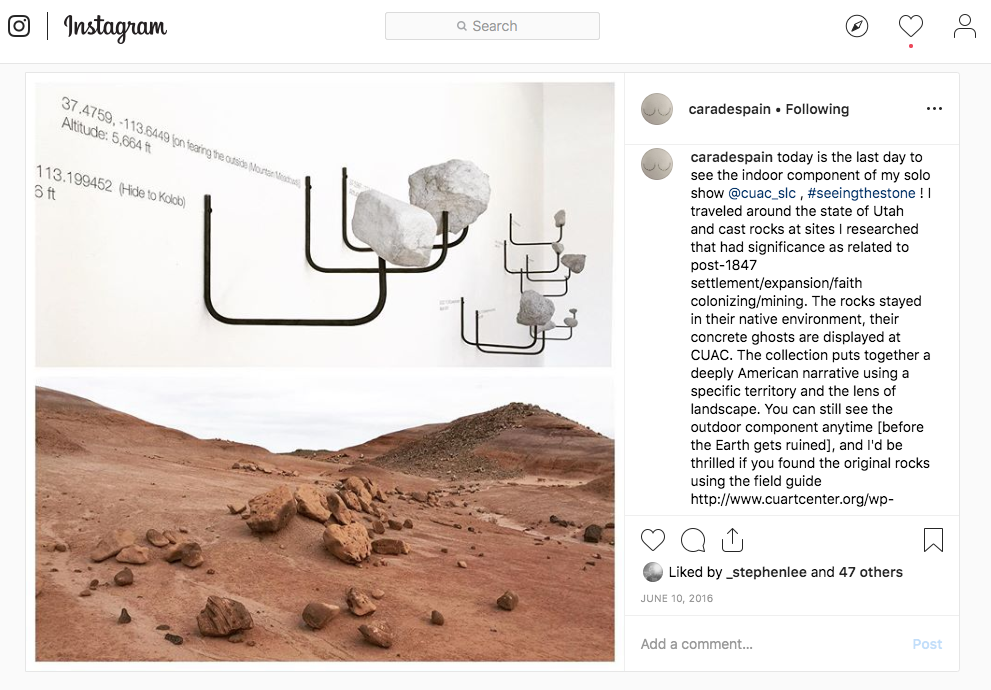▽ scroll for images ▽
seeing the stone, cast concrete and steel brackets + field guide, 2016
When I was invited to have a solo show in Utah, I was grappling with what I could put indoors that's of human scale concerning landscape that could say more than experiencing it directly in the state’s backyard. I was also interested in undermining the romantic depictions and divine histories I'd grown up with ad nauseam, and the approach the mostly male Land Artists had used to contend with remoteness. I cast rocks at different sites I researched around the state of Utah using the same silicone materials paleontologists use to cast bones and the original rocks remained on location. I also consulted with a few different scientists and gained permission to cast a few dinosaur fossils. A rock is an instrument of landscape, the most direct representative of it. A fragment of a much larger, longer story. I chose sites with a loose narrative of settlement as it relates to post-colonial Utah and the roles faith, mining and weapons development played, and how this is situated in the larger quintessential story of the the American west. I was able to cast everything from sandstone to petrified wood, coal, conglomerate near Cold War-era uranium mines, river-tumbled volcanic rock, and so on. The concrete surrogates were hung with their GPS coordinates according to the relative elevation of the actual rocks/sites. The collection puts together a deeply American, fraught narrative using a specific territory and the lens of landscape.
The purpose was to deprive viewers in the gallery of the view, and encourage them to get/be there (and ruminate on history rather than a confined, revised portrait) by absurdly inviting them to find a single, often unimportant stone in the expanses of the desert. The show was accompanied by a field guide I authored, and I made a hashtag for the show so those who go out looking for my ‘pieces’ generate images at the site— which both problematically perpetuates iconic landscape images in the disconnected context of image-based social media realm and reinforces the inclination to get to those places and author your own image. This was a research, field work-heavy project, and the outdoor component of the exhibition [the original rocks in the original position] can, by nature, still be ‘viewed’ indefinitely, and likewise the hashtag can continue to be populated.
